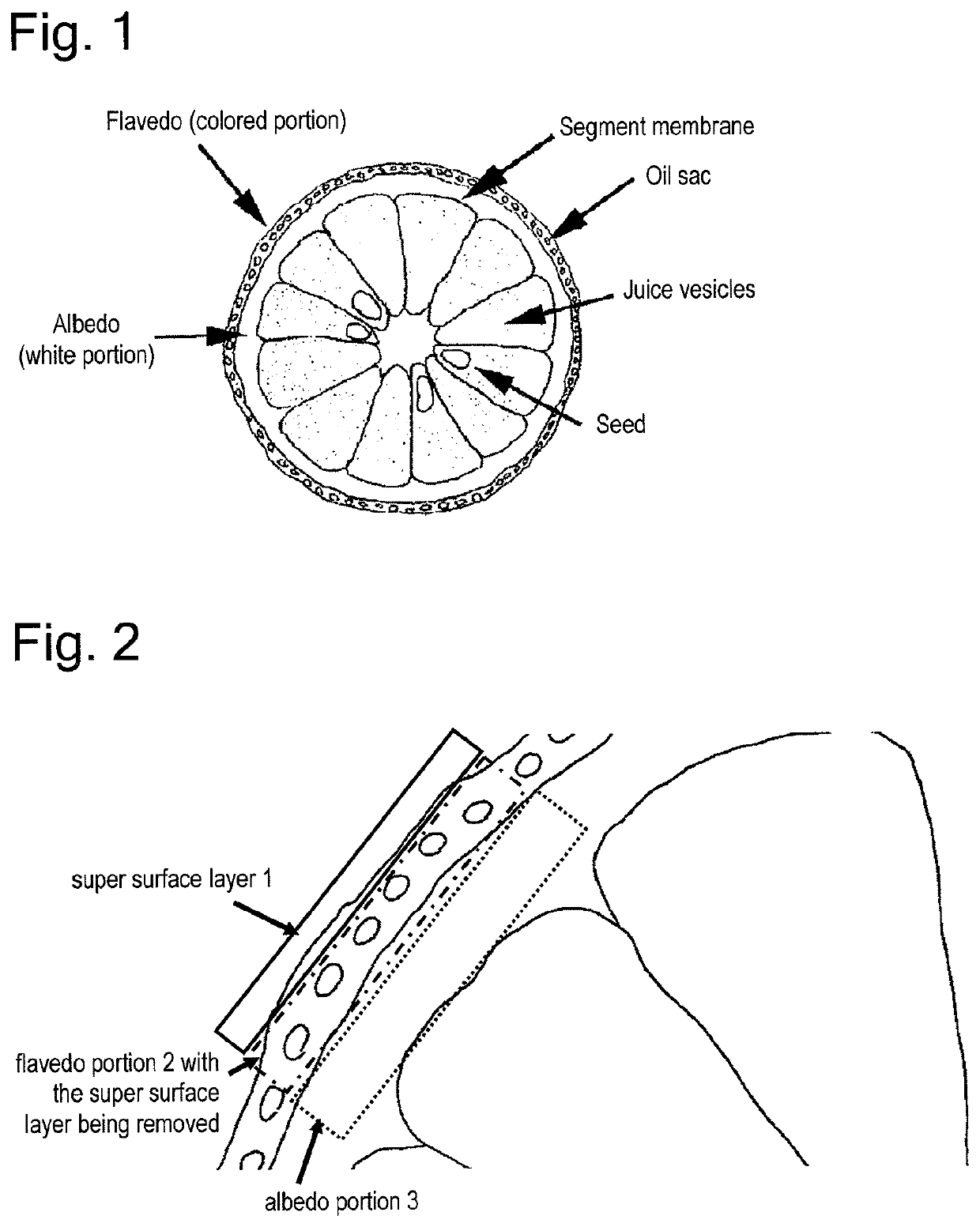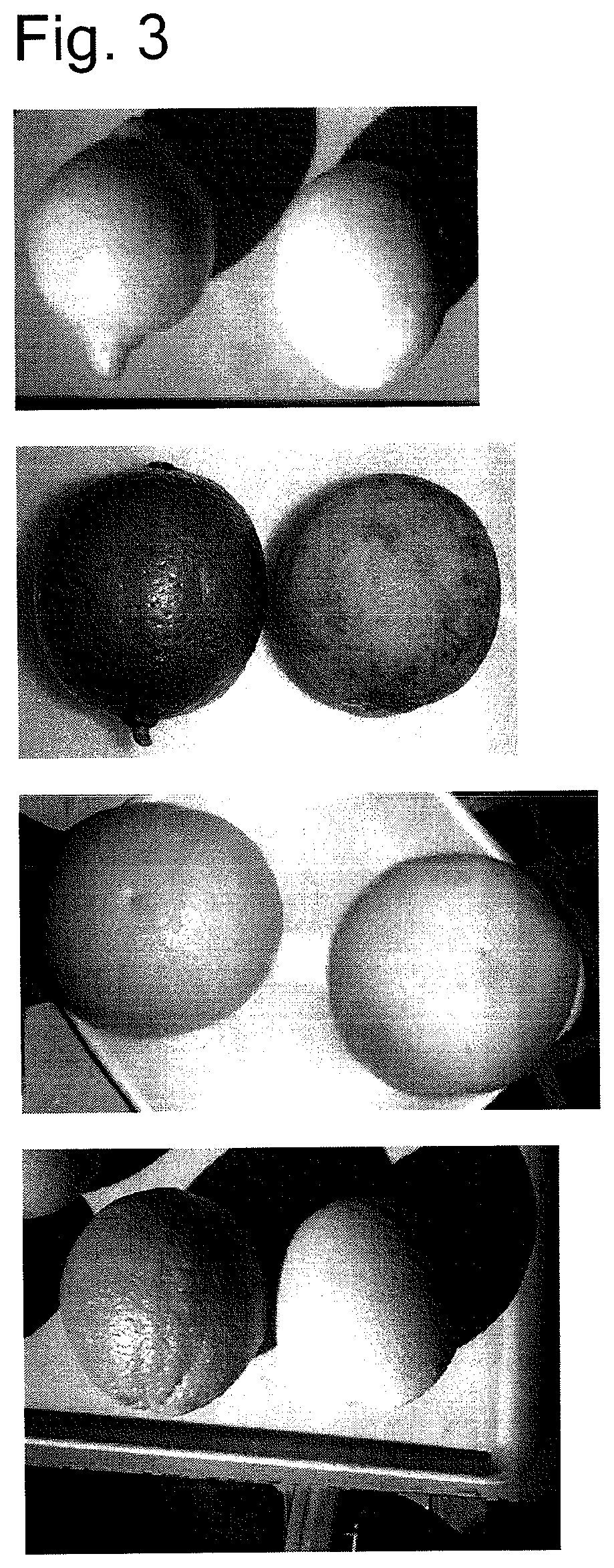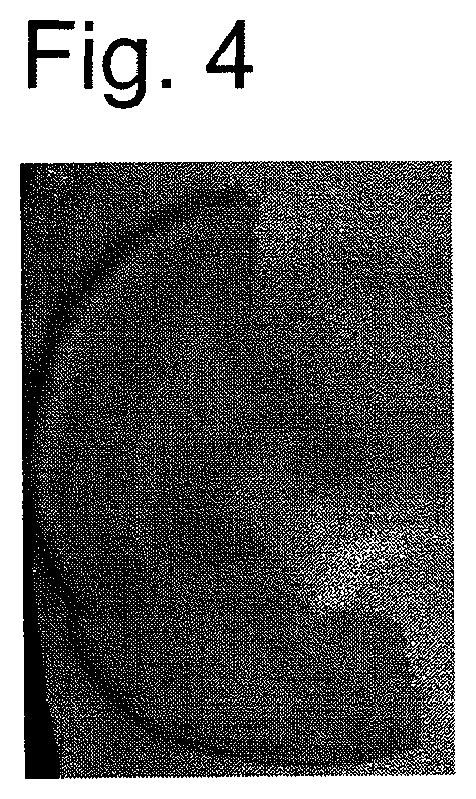Processed citrus fruit item having reduced bitterness
a technology of citrus fruits and bitterness, applied in the field of processed citrus fruits, can solve the problems of insufficient removal of bitterness, time-consuming process, and irritation of citrus fruit bitterness, and achieve the effects of maintaining the aroma components of the citrus peel, and reducing the bitterness of the peel
- Summary
- Abstract
- Description
- Claims
- Application Information
AI Technical Summary
Benefits of technology
Problems solved by technology
Method used
Image
Examples
example 1
[0027]The peel of lemon was divided into three portions (1-3 shown in FIG. 2) and each was evaluated for intensity of bitterness and aroma by eating them directly and smelling them. The intensity was evaluated on a 5-point scale, from 1 indicating “weak” to 5 indicating “strong.”
[0028]
TABLE 1Intensebitterness(irritatingIntensityPortionproperties)of aromaSample 1Super surface layer (from the 41outer surface of the peel to the surface of oil sacs)Sample 2Flavedo portion from which the 2-33super surface layer is removedSample 3Albedo portion1-21
[0029]The irritating bitterness was found to be localized, in particular, in the super surface layer of the peel. Further, it was suggested that the super surface layer was low in aroma and, thus, the bitterness could be reduced without loss of the aroma by removal of the surface layer.
example 2
[0030]By use of a rotating drum peeler for root vegetables, the super surface layer of a whole lemon was removed in such a way that 90% or more of oil sacs were left. The obtained processed lemon was cut in halves and most of the pulp, seeds, and segment membranes were removed from the peel to obtain a processed peel (FIG. 4). The obtained product was emulsified under crushing in water and the solids content was centrifugally removed to create an emulsified liquid. The obtained emulsified liquid was incorporated according to the recipes shown in Table 2 and the sample was filled into a bottle; carbonated gas was pressed in the bottle; and then the sample was pasteurized by heating at 85° C. for 5 minutes to produce carbonated drink 1. As comparative examples, carbonated drinks 2 and 3 were created: carbonated drink 2 was prepared by the same method as used to produce carbonated drink 1, except that the super surface layer was not removed, and carbonated drink 3 was prepared by the s...
production example 1
Production of Lemon Juice
[0034]By use of a rotating drum peeler for root vegetables, the super surface layer of a whole lemon was removed in such a way that 90% or more of oil sacs were left. The obtained processed lemon was cut in four pieces, and to the cut product, water and sugar were added to give °Brix 10. The mixture was crushed with a home mixer and then the resulting product was filtered with gauze to obtain lemon juice. The obtained lemon juice had a perceivable favorable lemon aroma, and although it had a strong sour taste, the irritating intense bitterness characteristic of lemon was reduced in it.
PUM
 Login to View More
Login to View More Abstract
Description
Claims
Application Information
 Login to View More
Login to View More - R&D
- Intellectual Property
- Life Sciences
- Materials
- Tech Scout
- Unparalleled Data Quality
- Higher Quality Content
- 60% Fewer Hallucinations
Browse by: Latest US Patents, China's latest patents, Technical Efficacy Thesaurus, Application Domain, Technology Topic, Popular Technical Reports.
© 2025 PatSnap. All rights reserved.Legal|Privacy policy|Modern Slavery Act Transparency Statement|Sitemap|About US| Contact US: help@patsnap.com



